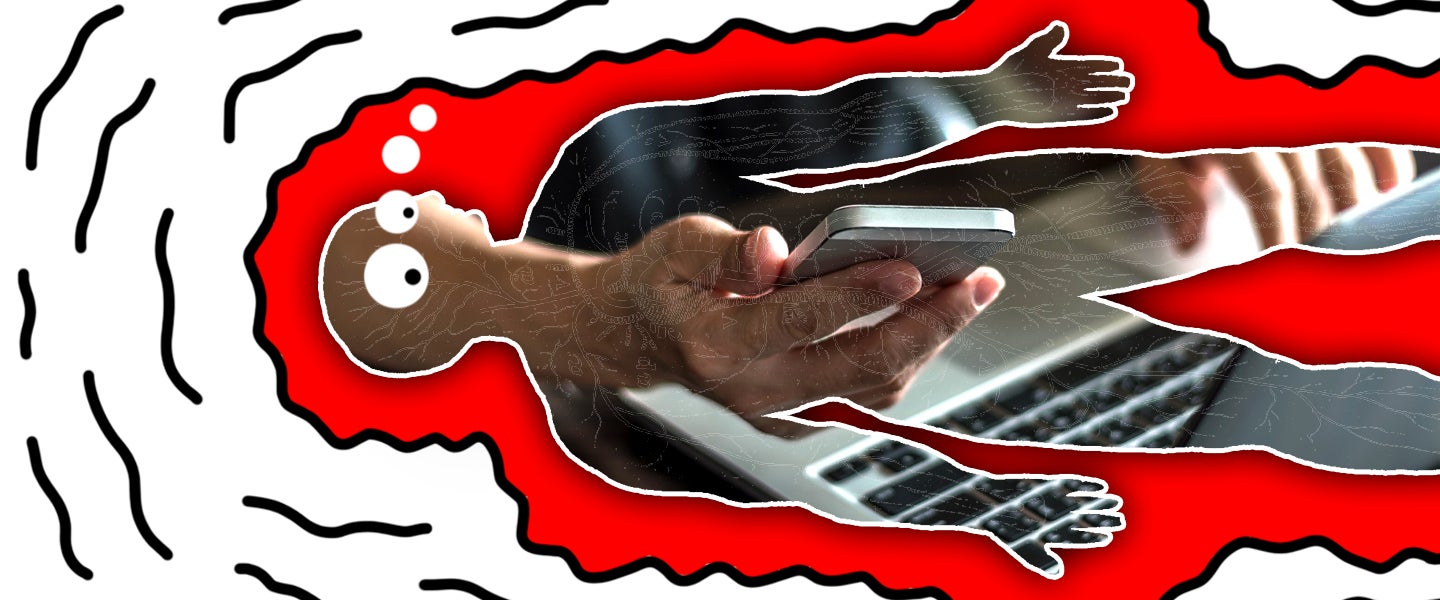The human body: An inspiring biological work of art? Or a meaty sack of germs and fluids? Either way, there’s still a lot we don’t know about what goes on in there — and scientists are constantly attempting to find out more. Here are the most interesting things we learned about our bodies in the last seven days…
The Internet Is Ruining Our Memory And… Where Was I Going With This?
I’m fully addicted to my cell phone and multiple browser tabs, because I just love to be fed a constant stream of images and content I can only focus on for three seconds. There was probably a time where I could just sit and read a book for hours, but our current technological era has transformed me into a person who opens a new tab and immediately forgets the reason why.
I blame myself for my lack of discipline, but I do also blame the internet, and rightfully so: A study published in World Psychology states that heavy internet users performed worse at memory tasks and were more easily distracted. Just writing this blurb has proven to me that it’s true, as I had to re-read an article detailing the study about five times before managing to get it all down here.
Some Organs Are Older Than Others
While the vessel that carries your organs might be 30 years old, half of your pancreas might be 16 and a quarter of your liver might be 10. A recent study found that brain, liver and pancreas cells in mice presented “age mosaicism,” meaning that the organs included both old and new cells. What was surprising to researchers, though, is that some of these cells were as old as neurons, previously thought to be the oldest cells in the body.
This is both good and bad news. The good news is that some of the cellular structures of our bodies have excellent longevity. The bad news is that parts of our bodies we thought regenerated later in life might not actually do so. This is particularly true for the liver, meaning you might be stuck with whatever damage all that cheap liquor you’ve guzzled has done.
Brush Your Teeth to Prevent Alzheimer’s
Surely your dentist has told you that the health of your mouth is representative of the health of your whole body. Unfortunately, they aren’t just correlated: Researchers at the University of Borgen in Norway have found evidence that the bacteria that causes gingivitis can spread from the mouth to the brain. This bacteria then produces a protein that destroys nerve cells, thus leading to memory loss and Alzheimer’s.
The bacteria alone won’t cause Alzheimer’s, and you aren’t guaranteed to lose your precious memories (the ones the internet has left you) if you have gingivitis. But it does increase the risk: Remember, flossing sucks, but forgetting the name of your child is worse.
STIs Are on the Rise
The World Health Organization (WHO) recently estimated that approximately one million new cases of STIs occur every day, mostly cases of chlamydia, gonorrhea, trichomoniasis and syphilis. The majority of cases are of trichomoniasis, with 156 million people between 15 and 49 infected every year. Currently, in fact, 1 in 25 people have an STI, though many may not experience symptoms.
Worse yet, some STIs are becoming increasingly hard to treat — syphilis and gonorrhea in particular, as there’s a shortage of the type of penicillin needed to treat syphilis, while some strains of gonorrhea have become treatment-resistant. As it stands, the best way to reduce the spread of STIs is still simply to dip your junk in creosote wear a condom and get tested frequently.
Salamander Goo Is Like Glue for Your Wounds
I absolutely love salamanders (a slimy lizard? Count me in!), and so, I’m sad to report that we must rough them up and collect their goo. Chinese giant salamanders, the world’s largest amphibian at around 5-foot-9 and 140 pounds, secrete a white goo from glands on their skin when they’re injured, which helps their wounds heal. People in China have been using the goo for more than 1,600 years to help with minor scrapes and burns, and there are around 20 million giant salamanders there kept as livestock for food and medicine.
Recently, too, scientists studied whether this salamander slop could function as a medical adhesive. They found that in tests on pigs and rats, the goo was somewhat less durable than other medical glues, but nevertheless performed better in the short-term, with researchers able to close bleeding skin incisions within 30 seconds of using the slime.
Apparently, even a “gentle” scrape brings on the ooze, and salamanders can produce it for a long time. As such, it has the potential to be a low-cost, eco-friendly solution. I thank these brave giant salamanders for their contribution to medical science.

